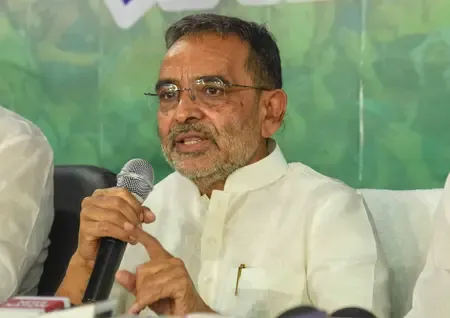What Progress Has Been Made in SIR Phase II?

Synopsis
Key Takeaways
- 99.25 percent of Enumeration Forms distributed across 12 states.
- Digitalization of EFs at 63.23 percent.
- Perfect distribution in Goa and Lakshadweep.
- Uttar Pradesh covers over 15.39 crore electors.
- Call for more Booth Level Agents to enhance the process.
New Delhi, Nov 26 (NationPress) The Election Commission of India (ECI) announced on Wednesday that it has made remarkable strides in Phase II of the Special Intensive Revision (SIR) 2025 of electoral rolls, with 99.25 percent of Enumeration Forms (EFs) successfully distributed across 12 states and Union Territories.
As per the Daily Bulletin released at 3 p.m., the distribution of EFs nationwide has reached 99.25 percent, showcasing effective mobilization by Booth Level Officers (BLOs) and involvement from Booth Level Agents (BLAs).
The enumeration phase, which is ongoing from November 4 to December 4, has seen a total of 50.59 crore EFs distributed from an eligible 50.97 crore electors.
Furthermore, the digitization of EFs is progressing, with 32.23 crore forms digitized to date, resulting in an overall digitization rate of 63.23 percent.
Goa and Lakshadweep have achieved a flawless 100 percent distribution of EFs, with Andaman and Nicobar closely following at 99.98 percent, Madhya Pradesh at 99.86 percent, West Bengal at 99.78 percent, and Gujarat at 99.75 percent.
Uttar Pradesh, the largest state by electorate size, has accomplished a 99.66 percent EF distribution, encompassing over 15.39 crore electors.
Puducherry stands at 96.32 percent, followed by Kerala with 97.72 percent and Tamil Nadu at 97.04 percent.
In West Bengal, 7.64 crore electors, or 99.78 percent EFs, have been successfully distributed.
According to an ECI statement, 78.42 percent of EFs have been digitized in this state.
In terms of digitization rates, Lakshadweep leads with 99.91 percent, followed by Goa with 86.77 percent and Rajasthan at 82.61 percent.
However, Uttar Pradesh has recorded the slowest digitization rate at 41.44 percent, followed by Kerala at 46.41 percent.
The Election Commission has encouraged recognized political parties to appoint additional Booth Level Agents to expedite the verification and digitization processes.
It is important to note that the figures from Rajasthan do not reflect the Anta Assembly constituency, where the revision was postponed due to a by-election.
The ECI will persist in releasing scheduled bulletins as the revision process approaches its December 4 deadline.









